

Changing expectations from workplaces raises the bar for UK employers when it comes to attracting and retaining talented employees.
At Caliber, we track the reputation of the top UK FTSE companies on an ongoing basis. In the past year, we have seen a significant negative impact on the percentage of people saying they want to work for one of these companies. Reach out to learn how we may help you understand how to become a more attractive employer.
One of the big challenges for businesses in the UK today is attracting and retaining talented employees. Despite rising inflation and a growing concern for the economic outlook, Caliber data shows that less than 8% of people in the UK expect unemployment to be a key issue for society in the next 12 months. People fear the impact of increasing energy prices to a much larger degree (46%), as well as the overall increased cost of living (54%)[1].

To paraphrase this, UK employees are confident in their job situations but are also looking for opportunities to mitigate the pressure of inflation on their personal finances. A recent report from McKinsey on the “Great Attrition” in the global job market suggests that one-third of all UK employees are considering switching jobs in the next six months.
This represents a real challenge for employers, as competition for talent will increase. However, a competitive salary is only one parameter for employers to fulfill – the cause of “Great Attrition” can also be found in changing demands from employers in terms of what to offer employees in addition to a competitive salary.
Our data shows that the past year (July 2021 to June 2022) has negatively impacted the average Employer Attractiveness (percentage of people saying that they would be interested in working for a company) for the 20 most visible UK FTSE companies.
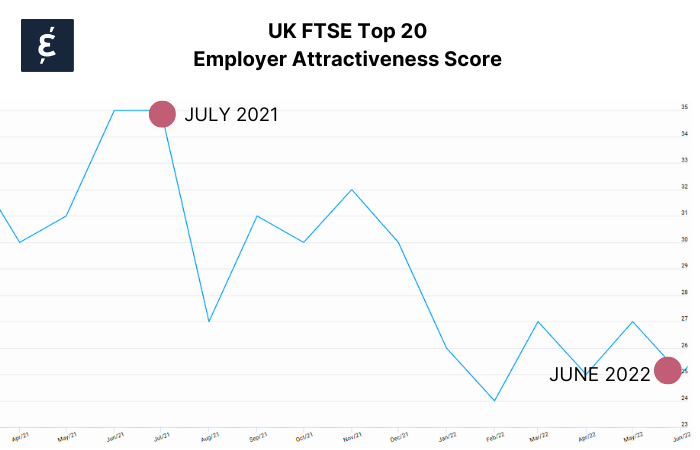
Since last year, the average Employer Attractiveness for these companies dropped from 35% to 25% – a significant decline in a very short time frame. Furthermore, the reputation of these companies dropped at a similar rate indicating a strong correlation between corporate reputation and willingness to work for a company.

The biggest changes in Employer Attractiveness have been seen with large employers such as Unilever and BT Group. Both see around half as many people saying they would like to work for the company compared to the same time last year. For BT Group, the decline coincides with a workforce conflict where pay rises were considered insufficient to cover inflationary pressures.
At the other end of the scale in terms of changes in Employer Attractiveness is Diageo, which in the past 12 months has managed to go against the overall trend of attrition, showing a 20% increase in people’s willingness to work for the company in the UK.
Undoubtedly, fair pay for fair work is a driving force for Employer Attractiveness, but we also found that elements like integrity, differentiation, and inspiration trended with Employer Attractiveness, underlining the fact that employers need to be experienced as more than a source of income for workers to be considered a good place to work. And the trend seems to be growing.
Are you interested in learning how your company is being affected by changing worker expectations? And do you want to find out which levers to pull to make them pick you over your competitors? Well, we are here to help you do just that! Reach out to learn more.

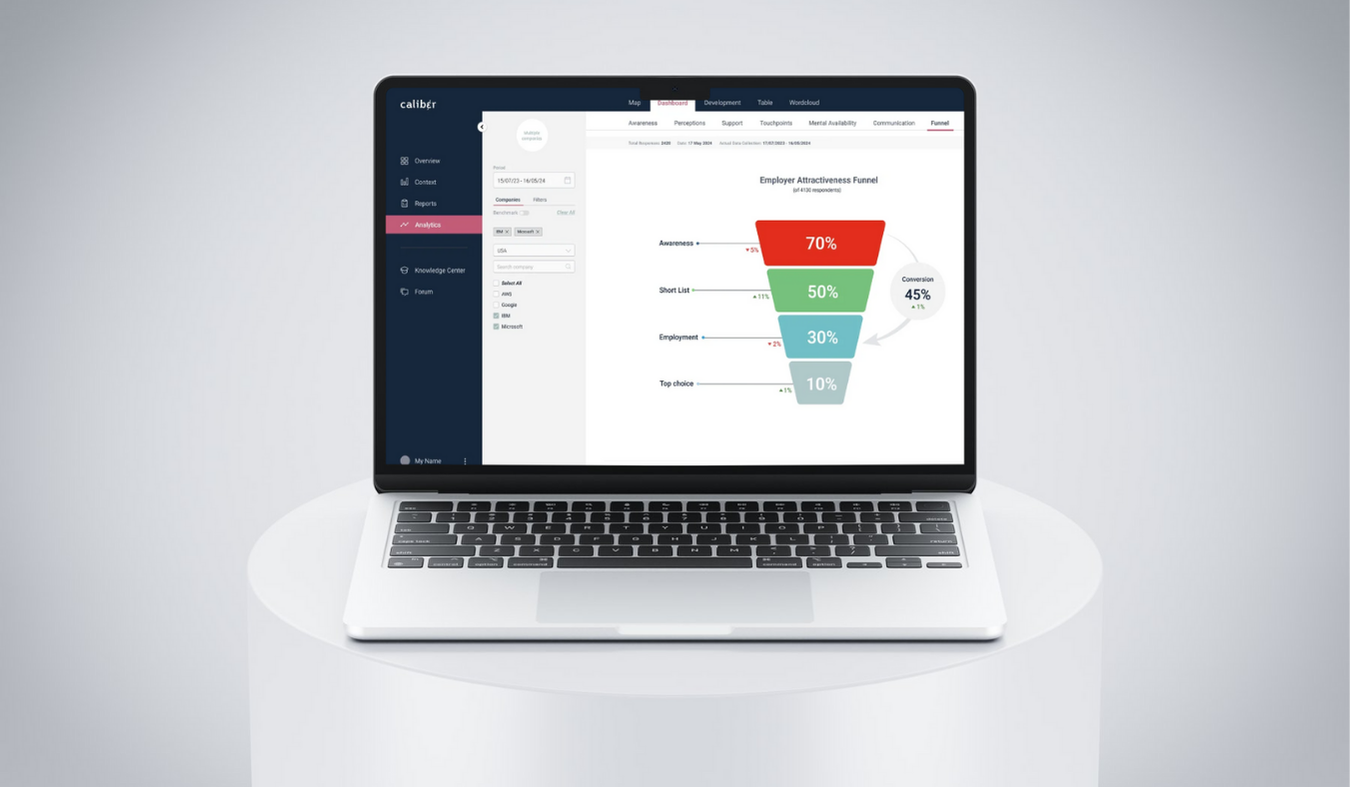
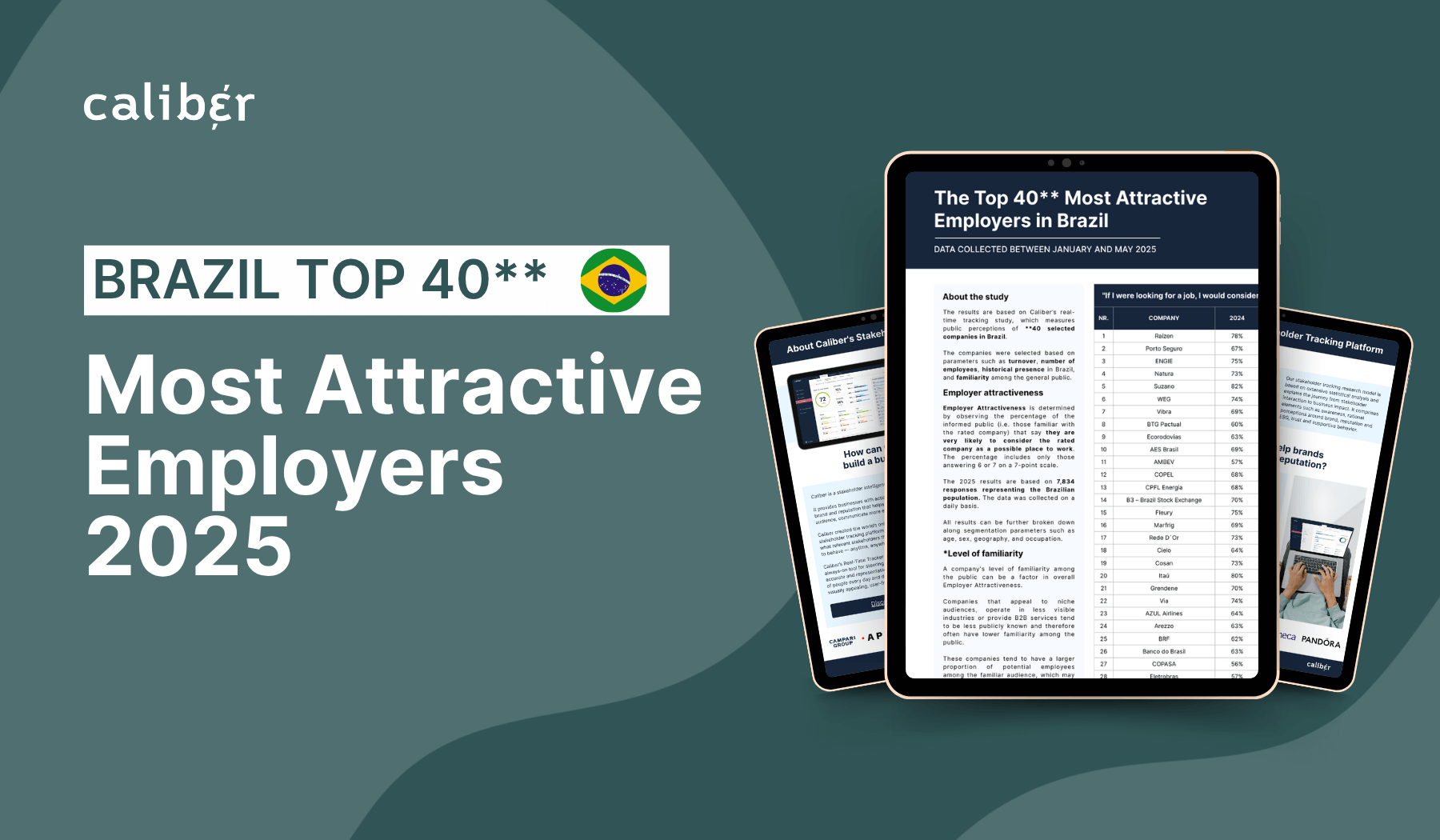
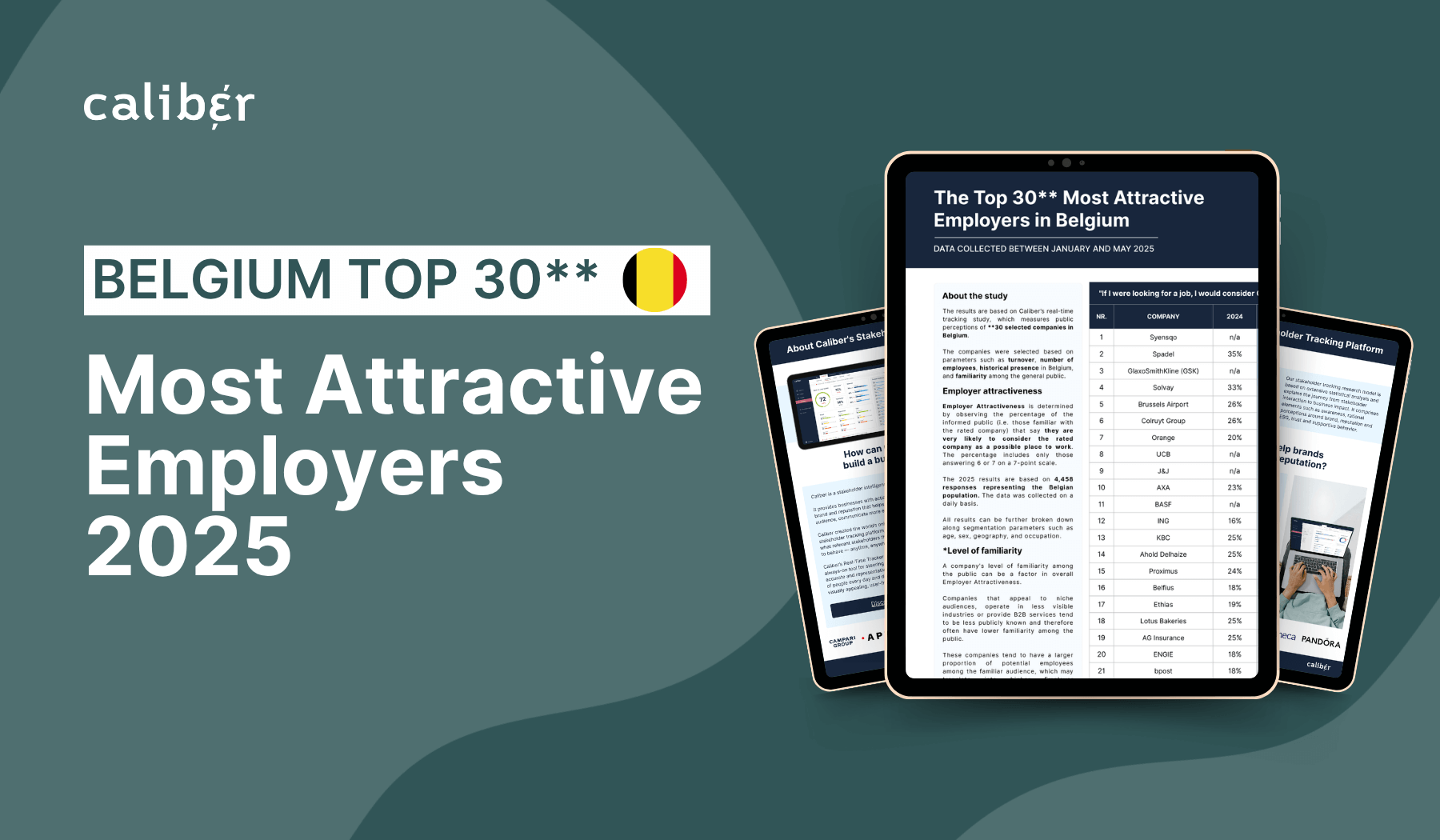
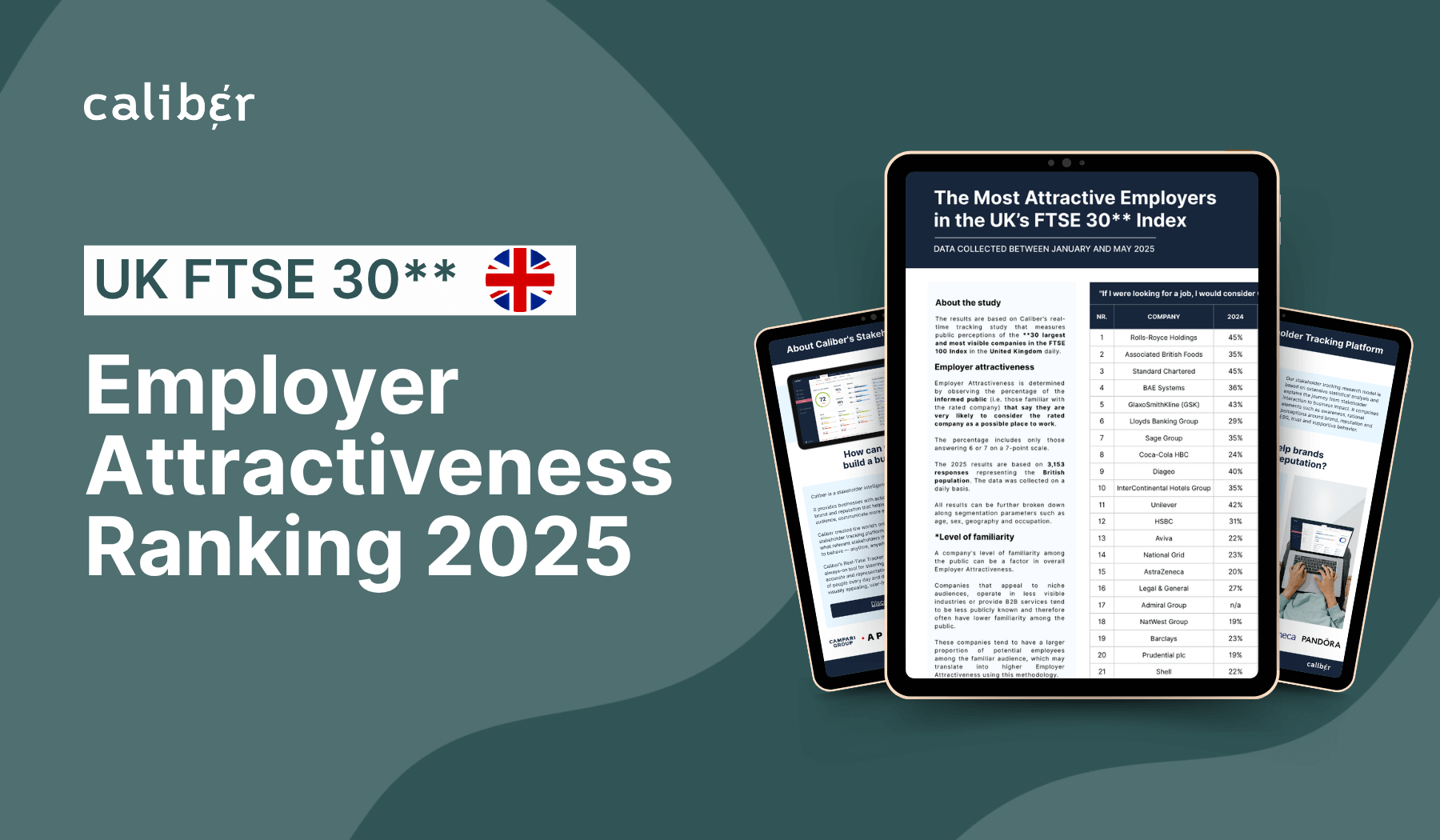
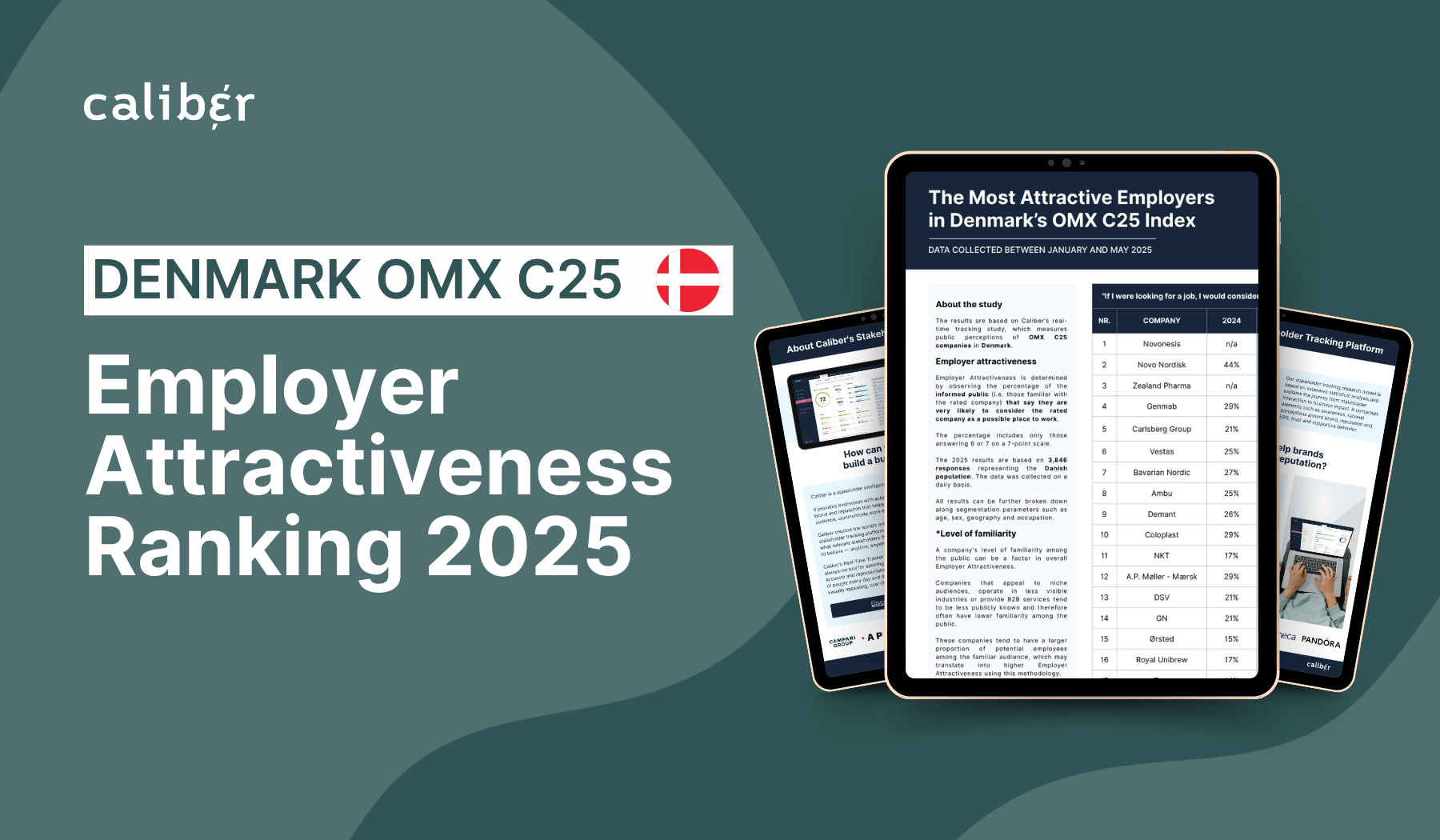
© 2024 Group Caliber | All Rights Reserved | VAT: DK39314320